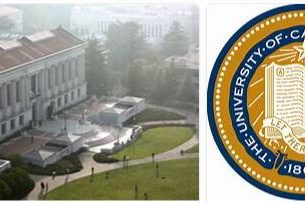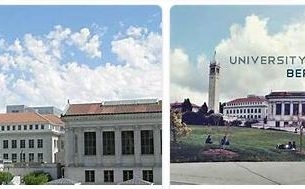Attractions
Cartago
The city was founded in 1563, but all older buildings were destroyed by earthquakes in 1841 and 1910. The basilica and some other structures were rebuilt in the colonial style. Excursions to the Irazú crater in the national park of the same name and to the Orosi valley are an experience.
Caribbean coast
Numerous beaches, towns and port cities in this area are worth seeing. The surroundings of the popular holiday resort of Puerto Limón offer opportunities for excursions. Also of interest are Guápiles, Tortuguero, Barra del Colorado, Cahuita and Puerto Viejo.
Pacific coast
Puntarenas is Costa Rica’s main Pacific cargo port. Near the coast is the island of San Lucas with the beautiful El Coco Beach. Isla del Coco is also worth a visit, pirate treasures are said to be buried here. A few kilometers south of Puntarenas is Puerto Caldera, a major cruise port. Quepos, Nicoya, Liberia and Sámara are other interesting cities. There are beautiful beaches in the Guanacaste region and near Quepos and Golfito.
- Topmbadirectory: Offers information about politics, geography, and known people in Costa Rica.
San Jose
Founded in 1737, the capital offers an attractive mix of traditional and modern architecture. The Teatro Nacional and the Palacio Nacional (National Assembly) are worth seeing. There are many museums, including the Museo de Jade with a collection of Central American jade. The city is an ideal base for exploring the beautiful Meseta Central region.
National parks
30 national parks and protected areas cover 26% of the country’s area. The Servicio de Parques Nacionales (SPN) (Internet: www.fpncostarica.org ; E-Mail: fpn_cr@racsa.co.cr ) in San José provides information and the necessary permits for visits. Entry is $6 per day.
The Braulio Carrillo National Park is located in the middle of the country, about 23 km north of San José. The park consists of five forest areas with hiking trails. Some have rainforest vegetation with orchids and ferns. Jaguars, ocelots and Baird’s tapir can be seen from high perches.
In the Volcan Poas National Park is the 2700 m high active volcano Poás with a crater diameter of 1.5 km. The hot crater lake changes color from turquoise to green and gray. Here is also the only mountain cloud forest in Costa Rica.
Tortuguero National Park is a protected breeding ground for green sea turtles. The ecological diversity is amazing, the alligators and the bird life are particularly impressive. There are also monkeys, sloths and lizards to see. The canals and lagoons are ideal for exploring. Tent sites and accommodation are available. Santa Rosa National Parklies in the climatic dry zone of the Pacific. Here you will find extensive savannahs, forests with evergreen trees and numerous wild animals. Different species of sea turtles lay their eggs here.
Corcovado National Park is an almost untouched rainforest and home to numerous endangered animal species. Here is the tallest tree in Costa Rica, a 70 m high ceibo. The Cano Island Biological Reserve is a bird sanctuary worth seeing.
In Cahuita National Park you can see howler monkeys and capuchin monkeys. The country’s only coral reef is home to 500 species of fish. In the Chirripó National Park stands the highest mountain in Costa Rica: Chirripó Grande (3820 m). The special attraction is the quetzal, which is considered the most beautiful bird in Latin America.
A visit to the jungle in the Rincón de la Vieja National Park is only permitted with a guide from the Conservation Center. The effort is worth it, because the scenery is unique. Water is boiling everywhere and you are surrounded by the sulfur vapors of the swamp landscape. Costa Rica’s national flower, a purple orchid, grows here. The Los Quetzales National Park, which is of interest to active holidaymakers and environmentally conscious tourists, is located 122 km from the capital at an altitude of around 2,800 meters and is known above all for its lagoons and wetlands.
Also of particular note are Manuel Antonio National Park and the Barra de Colorado and Rafael L. Rodriguez Game Reserves.
Numerous small islands in the Nicoya Gulf near Puntarenas are protected.
Shopping
Overview
Typical are rocking chairs made of wood and leather, which can be dismantled for transport. You can find many nice souvenirs in the markets, but the prices are a bit higher than in other Latin American countries. Popular souvenirs include wooden items, pottery, jewelry, leather items, and various craft items. Shop opening hours: Mon-Sat 09.00-18.00/19.00.
Nightlife
Introduction
In San Jose there are nightclubs, theaters and cinemas. Folklore evenings are also organized.
Culinary
Overview
The restaurants in the larger cities offer excellent French, Italian, Mexican, Chinese and North American dishes. Sodas (small restaurants) serve local specialties. Typical dishes include casado (rice, beans, pot roast, plantains and cabbage), olla de carne (beef, plantain and vegetable soup), sopa negra (black beans with poached egg) and picadillo (meat and vegetable stew). Snacks such as gallos (stuffed tortillas), tortas (meat and vegetable), arreglados (meat and vegetable bread) and pan de yuca (San José specialty) are very popular. Drinks: Cold drinks are made from fresh fruit, milk or grain flour, e.g. B. Cebada (made from barley flour), Pinolillo (made from roasted corn) and Horchata (made from rice flour and cinnamon). Alcohol and soft drinks are widely available. Coffee is cheap.
Accommodation
Hotels
The number of accommodations is constantly increasing. There are hotels of all price ranges in San Jose, and there are several good hotels near the airport. A 3% sales tax and 3% tourist tax will be added to the hotel prices. Almost all hotel owners speak English. The large international hotels offer swimming pools and other sports facilities; Hotel restaurants are good and inexpensive. The hotels outside the capital are cheaper, and the standard is sometimes lower. There is also a wide range of hotels, lodges and cabins in the mountains and forests (mountain and jungle lodges). There are also holiday villas. Categories: Hotels are marked with A, B, C and D. The category depends on the facilities and prices, so 20% of the hotels are classified with A and B, 30% with C and D. Further information is available from the Costa Rica Chamber of Hotels (website: www.costaricanhotels.com).
Camping
There are campsites in San Antonio de Belén, about 8 km from San José. Another campsite is near Aureola. In almost all national parks (see vacation spots & excursions) camping is allowed in marked places.
Culture
Religion
76.3% Catholic, 13.7% Evangelical, other Christian and Baha’i minority.
Social Rules of Conduct
Manners: When greeting someone shakes hands. The salutation is very important, men are addressed with “Don” and women with “Doña”. You should say thank you for invitations with a small gift. Clothing: Casual clothing is accepted, bathing suits are required on the beach. Tipping: Taxi drivers do not expect tips. By law, 10% service tax and 3% tourist tax must be added to hotel bills. Restaurants charge 10% service. Hotel staff, porters and waiters expect tips.
Climate
Best travel time
Up to 600 m above sea level i.e. M. humid hot climate. Inland plateau: Between 800 and 1600 m above sea level. i.e. M. subtropical with pleasant temperatures. High mountains: Rather cool in regions over 1600 m above sea level. M. The average temperature in the central region is 23°C, it is significantly warmer on the coasts. Rainy season May – November. The rains, which mostly occur in the afternoon, can be quite heavy and are usually heavier on the Caribbean coast than on the Pacific coast. Dry season December to May, hardly any temperature differences between summer and winter. Generally high humidity.
Country data
Phone prefix
+506
Area (sq km)
51,100 sq km
Population
5.094 million (Source: homosociety)
Population density (per square km)
100
Population statistics year
2020
Main emergency number
911



